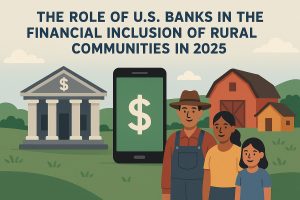Retirement planning is a vital process for anyone looking to ensure a comfortable life after they stop working. In Canada, there are several strategies and tax benefits that can significantly enhance your financial stability during your golden years. Taking a proactive approach early can help you leverage these benefits and build a robust nest egg for the future.
Utilizing Registered Retirement Savings Plans (RRSPs) and Tax-Free Savings Accounts (TFSAs) can provide substantial tax advantages, helping you grow your savings more efficiently. With careful consideration and early preparation, you can create a retirement plan that not only meets your needs but also maximizes available tax advantages, ensuring a secure and enjoyable retirement.
Understanding the basics of Canadian retirement plans

Canada offers various retirement schemes designed to support individuals in their post-work years. The most common options include the Registered Retirement Savings Plan (RRSP), the Canada Pension Plan (CPP), and the Old Age Security (OAS). Together, these programs aim to provide a comprehensive financial safety net, blending personal savings with government-backed benefits.
The RRSP is a government-approved program that allows you to save for the future, with contributions being tax-deductible. This immediate tax benefit reduces your taxable income, giving you more financial flexibility during your working years. The funds within the RRSP grow tax-deferred, meaning you won’t pay taxes on investment gains until you make withdrawals during retirement.
The CPP, on the other hand, operates as a social insurance program funded by contributions from employees, employers, and the self-employed. It provides a steady income stream in retirement, calculated based on your contributions and the age at which you start receiving benefits. Starting earlier may lower your monthly amount, while delaying can increase your payments significantly.
OAS is a taxable monthly benefit available to most Canadians aged 65 and older. Unlike the CPP, OAS is funded through general tax revenues and doesn’t require direct contributions. It’s designed to support those who meet residency requirements, offering additional financial stability in retirement. High-income earners should be aware of potential clawbacks on OAS payments due to the income-tested nature of the benefit.
Together, these programs form the backbone of Canada’s retirement system, offering a mix of personal savings and government-supported benefits. This balanced approach ensures that retirees have multiple income sources to rely on, reducing the risk of financial insecurity.
Registered retirement savings plan
An RRSP is an essential tool for Canadians aiming to save for their retirement. Contributions made to an RRSP are tax-deductible, meaning you can reduce your taxable income by the amount you contribute. Additionally, the growth within the account is tax-deferred, allowing your savings to compound more effectively over time.
This provides an immediate tax benefit while allowing your investments to grow tax-free until you withdraw them. It’s important to note that withdrawals are taxed as income, which will ideally be at a lower rate when you retire. With strategic planning, you can maximize the benefits of these programs and ensure a financially secure retirement.
Annual contribution limits are set at 18% of your previous year’s income, up to a maximum amount that is adjusted annually. Those who do not maximize their contributions can carry forward unused room to future years. This flexibility ensures that even those with fluctuating incomes can take advantage of the program’s benefits in the long run.
Tax-free savings account
Unlike the RRSP, contributions to a TFSA are not tax-deductible, but withdrawals and investment income earned are tax-free. This makes the TFSA a highly flexible and beneficial saving mechanism, especially for those with varying income levels who may need access to their funds without incurring taxes.
Contribution limits are set annually, and unused room can be carried forward. Using a TFSA wisely as part of your retirement strategy allows for great flexibility and tax savings on investment income, helping you achieve your retirement goals more effectively.
Leveraging tax benefits for a comfortable retirement
Canada provides numerous tax benefits that can make your retirement savings work harder and smarter. One key benefit is the pension income tax credit, which allows individuals aged 65 and above to claim a tax credit on eligible pension income. Another significant benefit is pension income splitting, which permits couples to split up to 50% of eligible pension income.
This strategy can reduce the overall tax burden by ensuring income is taxed at a lower rate. By effectively using these tax strategies, you can lessen your tax liabilities and stretch your retirement savings further, ensuring greater financial stability during your retirement years.
Pension income tax credit
At the age of 65, Canadian retirees can take advantage of the pension income tax credit, which allows them to claim a tax credit on up to $2,000 of eligible pension income annually. This tax credit reduces the amount of tax payable, providing more income for your day-to-day expenses. Eligible income sources can include withdrawals from RRSPs, annuities, or registered pension plans.
It’s a simple but effective way to reduce your tax burden and increase your disposable income, enhancing your quality of life during retirement. By combining disciplined contributions with strategic withdrawals, retirees can optimize their income and minimize taxes during their later years.
Pension income splitting
Pension income splitting is another powerful tool for reducing tax liabilities in retirement. Couples can split up to 50% of their eligible pension income, allowing the higher-earning spouse to transfer income to the lower-earning spouse. This approach not only reduces tax liability but also equalizes income distribution between partners.
This strategy can significantly reduce the total amount of tax paid, as income is shifted into a lower tax bracket. It’s important to note that not all types of pension income are eligible for splitting, so careful planning and consultation with a financial advisor are recommended. Understanding the nuances of this strategy can ensure its successful implementation.
By taking advantage of pension income splitting, couples can ensure they maximize their after-tax retirement income, contributing to a more secure and enjoyable retirement. This added financial security allows retirees to focus on enjoying their post-work years without the constant stress of financial uncertainty.






